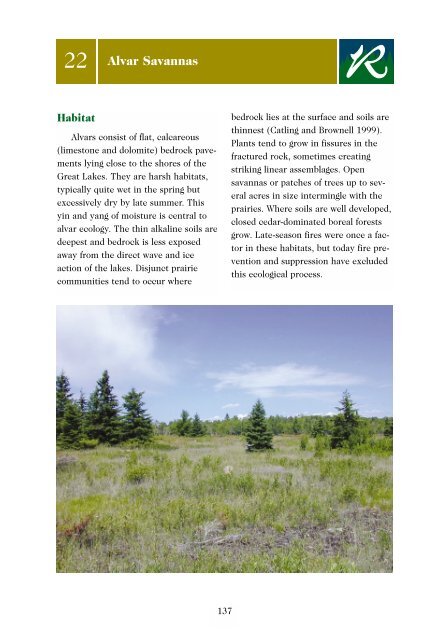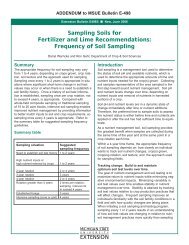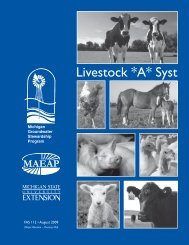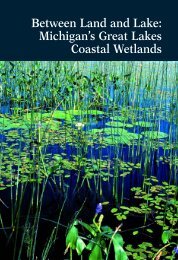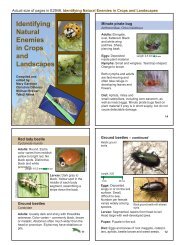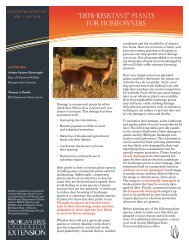Michigan Forest Communities - Michigan Association of ...
Michigan Forest Communities - Michigan Association of ...
Michigan Forest Communities - Michigan Association of ...
You also want an ePaper? Increase the reach of your titles
YUMPU automatically turns print PDFs into web optimized ePapers that Google loves.
22<br />
Alvar Savannas<br />
R<br />
Habitat<br />
Alvars consist <strong>of</strong> flat, calcareous<br />
(limestone and dolomite) bedrock pavements<br />
lying close to the shores <strong>of</strong> the<br />
Great Lakes. They are harsh habitats,<br />
typically quite wet in the spring but<br />
excessively dry by late summer. This<br />
yin and yang <strong>of</strong> moisture is central to<br />
alvar ecology. The thin alkaline soils are<br />
deepest and bedrock is less exposed<br />
away from the direct wave and ice<br />
action <strong>of</strong> the lakes. Disjunct prairie<br />
communities tend to occur where<br />
bedrock lies at the surface and soils are<br />
thinnest (Catling and Brownell 1999).<br />
Plants tend to grow in fissures in the<br />
fractured rock, sometimes creating<br />
striking linear assemblages. Open<br />
savannas or patches <strong>of</strong> trees up to several<br />
acres in size intermingle with the<br />
prairies. Where soils are well developed,<br />
closed cedar-dominated boreal forests<br />
grow. Late-season fires were once a factor<br />
in these habitats, but today fire prevention<br />
and suppression have excluded<br />
this ecological process.<br />
137


